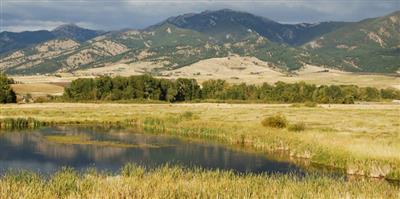CASPER, November 10, 2016 –Starting in November, the U.S. Department of Agriculture’s (USDA) Natural Resources Conservation Service (NRCS) will accept and process applications for enrollment in the Conservation Stewardship Program (CSP), the nation’s largest conservation program. Applications will be made available in local service centers.
NRCS has made several updates to the program this year to help producers better evaluate their conservation options and the benefits to their operations and natural resources. New methods and software for evaluating applications will help producers see up front why they are or are not meeting stewardship thresholds, and allow them to pick practices and enhancements that work for their conservation objectives. These new tools also allow producers to see potential payment scenarios for conservation early in the process.
“This year, the Conservation Stewardship Program provides even more opportunities for conservation and greater flexibility at the local level to prioritize resource concerns and conservation approaches,” says Astrid Martinez “Customized CSP tools for Wyoming will improve the customer experience during application evaluations.”
NRCS offices will begin processing applications for the program on November 14, 2016, with sign-up running through February 3, 2017. People interested in the additional opportunities the updated CSP will offer can find information on the new CSP portal, located at http://www.nrcs.usda.gov/csp . This one-stop shop, which provides information to help producers determine whether CSP is right for them, will be continually updated as more information becomes available. Changes that producers can expect to see include nearly double the enhancements and conservation practices offered and better reporting tools to tell producers the results of their conservation efforts on their land.
Through CSP, agricultural producers and forest landowners earn payments for actively managing, maintaining, and expanding conservation activities like cover crops, ecologically-based pest management, buffer strips, and pollinator and beneficial insect habitat – all while maintaining active agriculture production on their land. CSP also encourages the adoption of cutting-edge technologies and new management techniques such as precision agriculture applications, on-site carbon storage and planting for high carbon sequestration rate, and new soil amendments to improve water quality.
NRCS has addressed producer and stakeholder input requesting greater flexibility to address local resource concerns. Now, NRCS will more effectively utilize input from farmers, ranchers and partners in State Technical Committees and local workgroups to inform and expand conservation strategies under the program. Producers will be better prepared to apply because they will know these local ranking priorities and targeted resource concerns in advance.
CSP is for producers who are already established conservation stewards, helping them to deliver multiple conservation benefits on working lands, including improved water and soil quality and enhanced wildlife habitat. Information about CSP, including national and state ranking questions and enhancement descriptions, is available at www.nrcs.usda.gov/csp Producers interested in the program should visit their local USDA Service Center to submit an application.
Since 2009, working with as many as 500,000 farmers, ranchers and landowners to protect over 400 million acres nationwide, USDA has invested more than $29 billion to help producers make conservation improvements, boosting soil and air quality, cleaning and conserving water and enhancing wildlife habitat. For an interactive look at USDA’s work in conservation and forestry over the course of this Administration, visit https://medium.com/usda-results.
Please contact your local NRCS office if you are interested in Conservation Stewardship Program for 2017.
Source: USDA NRCS
Photo courtesy of USDA NRCS.


